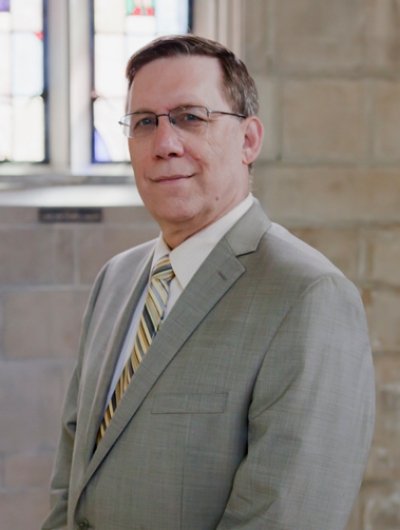
By
It is “the most important event in Roman Catholic history since the Protestant Reformation,” says Joseph Professor of Catholic Systematic Theology Richard Gaillardetz. But how many Catholics today actually remember Vatican II and what it was about?
With 2012 marking half a century since the start of the Second Vatican Council, notes Gaillardetz, a growing number of Catholics — including those studying for ordained and lay ministry — have no personal recollection of Vatican II, its invigorating vision and the way it profoundly re-shaped the understanding and practice of the Catholic faith.
For the post-Vatican II generations, Gaillardetz and his co-author Catherine Clifford of St. Paul University in Ontario have published Keys to the Council: Unlocking the Teaching of Vatican II to present a less intimidating and more accessible introduction to the vision of the Second Vatican Council.
“Without in any way denying the essential features of our great tradition, the Second Vatican Council brought into the light many important insights into the Catholic faith that had been long neglected or obscured over the course of the four centuries since the Council of Trent,” said Gaillardetz, who joined the University’s Theology Department last fall.
For Gaillardetz, an ecclesiologist, one of Vatican II’s greatest successes was that it “led the church to recognize the fundamental role that dialogue must play in the life of the church and in its mission in the world. We have broken new ground in our encouragement of ecumenical dialogue with other Christian communions. We have undertaken fruitful dialogue with other religious traditions and have become much more successful at engaging the global issues of our time.”
So why is it that 50 years later, some of Vatican II’s teachings are still being debated and yet to be fully implemented? Gaillardetz points out that this is a daunting task.
“A good part of the difficulty has to do with the sheer volume of the council’s production,” he said. Vatican II produced 16 documents: four constitutions, nine decrees and three declarations. “If you group together all of the decrees of all 21 ecumenical councils, from the Council of Nicaea to the Second Vatican Council, there are 37,727 lines of text. The Second Vatican Council alone produced 12,179 lines — almost one third of the councils' total production!
“Now add to that the over 50 volumes of background documentation, all published in Latin and almost none of it translated, and you begin to see why the study of Vatican II is such a massive undertaking.”
Gaillardetz added, “We [also] have to be honest and say that there are many people who are uncomfortable with the bracing, reformist vision of the council. So what happens is that people introduce new approaches for ‘properly’ interpreting the council, approaches that have as their real purpose minimizing the scope of the council’s calls for reform.”
Many church-watchers say the full vision of Vatican II is still unrealized, and Gaillardetz points to a particular teaching he says has been undervalued: “the claim in Lumen Gentium #12 that every Christian receives by baptism a supernatural instinct for the faith, what the council called the sensus fidei, that allows each Christian to hear God’s Word, to penetrate its meaning more profoundly and to apply it more fully in their lives.
“This means that every Christian, not just the bishops, is charged with listening to God’s Word and penetrating its meaning and significance. Every Christian can contribute to the very development of tradition by the witness of their spiritual experience and wisdom.”
In talks he has given about Vatican II — which by the end of the year will have taken him across the US and abroad, including Canada, Ireland and Australia — Gaillardetz says he has found a mixed reaction depending on the age of the audience members.
“Among older Catholics there is a sense of gratitude for the council but also a certain wistfulness as they express concerns about church leadership, and particularly younger priests, who no longer appear to be inspired by the vision of the council,” he said. “When I talk to younger Catholics they are mostly surprised that they had not heard that much about the council. They are usually excited and inspired by what they learn of the council’s vision.”
Gaillardetz says a new ecumenical council will be needed to finish the work of Vatican II, given such pressing issues as the role of women in the Catholic Church, but now is not the time.
“First, because there is much in Vatican II’s teaching that still requires full implementation. Second, because our current ecclesiastical leadership is in a more reactive and cautionary mode, one which is not likely to be open to the bold action that a new council would require in order to be successful.”



